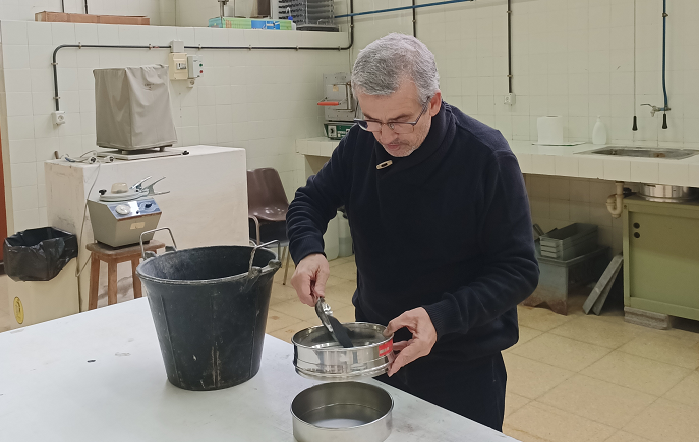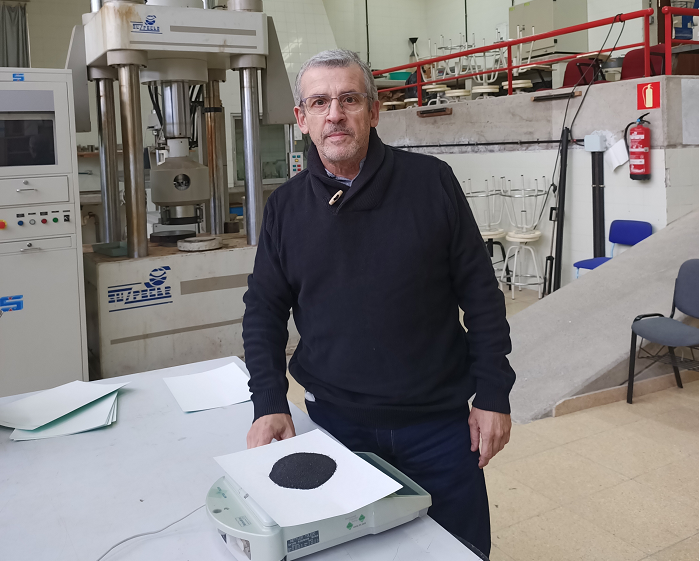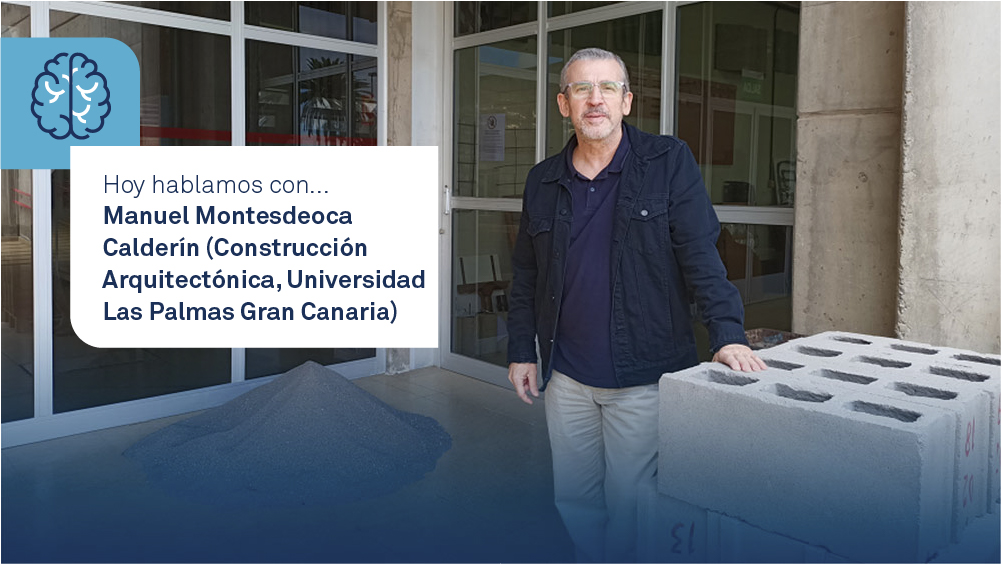They say that every cloud has a silver lining. A philosophy that certainly applies to the subject of today’s article. The possibility of having more volcanic ash to construct buildings and roads due to the tragedy caused by the volcanic eruption in La Palma.
The Canary Islands, due to their being volcanic soil, don’t have enough clay content to manufacture ceramic bricks with which to build partitions and walls in buildings. For this reason, since the 1950s, materials from volcanic eruptions have been used in construction, such as lapilli, commonly known as “picón” in the Canary Islands, a kind of volcanic aggregate material characterized for being light and porous.
Manuel Montesdeoca, professor, researcher and head of the Department of Building Architecture of the Universidad de Las Palmas de Gran Canaria (ULPGC), aims to obtain the necessary authorizations from the pertinent regional, islander and university authorities, to gain access to the restricted zone of the volcano of La Palma to collect ash and aggregate samples to analyze them.
The Department of Building Architecture of ULPGC’s research focuses on sustainable architecture, and since 2019, it has been working on obtaining new construction materials with better physical, mechanical, thermal and acoustic properties than the current ones.
Thanks to this new line of research, the group is optimizing traditional construction materials that use picón as an additive or aggregate, so that when mixed with other recycled products, they create materials that are more sustainable and have better particularities.
Compared to traditional aggregates, the recycled materials that they work with, originate from construction waste and rubber mulch from recycling tires. As for vegetable fibers, the Canary Islands have invasive species such as giant reeds (Arundo donax), fountaingrass (Pennisetum setaceum), century plant (Agave americana), castor oil plant (Ricinus communis), etc… They also aim to work with fibers from waste from the local banana plantations that could be combined with other products to obtain new construction materials. In this sense, the researchers from the department of Building Architecture aim to collaborate with other research groups from ULPGC to obtain usable fibers from invasive species or banana plantation waste.

Applications of picón
Volcanic ash dust, of the fine fraction under 0.063 millimeters, has a high pozzolan content, which is used to produce cement. “If we are able to verify that this fine dust from La Palma has high pozzolan content, it could be used in the manufacture of cement”, explains Montesdeoca, “but we would need to obtain financing for the entire process (travel, extraction, transport, research, etc…)”.
These ashes (fine fraction), could be used as an additive in cement production, and the coarser fractions, such as sand and gravel could be used as additives in the manufacture of mortar, concrete and other materials with similar characteristics. Gravel also tends to be used on embankments, sub-bases and base courses on roads.
The coarser picón aggregate, which is lighter than gravel, is used in the production of mortar and concrete, which are used in the manufacture of picón blocks (that replace ceramic bricks), sub-floors, textured wall finishing, light cement, pervious concrete, etc…
Picón, due to its porosity, absorbs humidity very well and is highly functional if used as a substrate under green walls and roofs, gardens or flower pots, or as groundcover on forest tracks, country roads, trails, etc.
Solidified lava (or “malpaís”, as it’s called in the Canary Islands) has a characteristic irregular, sharp and cutting surface. In the Canary Islands there are several formations of this kind, most of them are protected areas, natural reservations or natural monuments. “The lava flow that is burying buildings in La Palma, under normal circumstances would become a protected area, and therefore, extracting aggregate materials or building on it would be forbidden”, explains Montesdeoca.
It is worth noting that one of the raw materials used in the manufacture of insulation materials of the mineral wool family is obtained from melting volcanic basaltic rocks at high temperatures.

Picón on green walls and roofs
Additionally, picón is very functional when used as a substrate of green walls and roofs in buildings. Extensive green walls and roofs are based on hydroponic crops that capture moisture from the environment to feed a ground cover layer. The substrate in green walls and roofs must fulfill the functions of supply and retention of nutrients; absorption of readily available water; proportion of support for rooting; drainage and aeration of roots. Picón, as a substrate gravel, fulfills all these functions.
Green walls and roofs have a covering element; underneath there is the substrate, which is the supporting layer for the plants, and is made of a mixture of inorganic (minerals like picón) and organic matter, that combine water retaining capacity in the summer and draining capacity in the winter. Under the substrate goes a filtrating layer, and under it, the draining layer. The presence of picón in the substrate gives it the capacity to collect and retain water and hold it or pass it to the draining layer, which substitutes irrigation.
Plant covers offer many advantages, some of them being that they require little power consumption, have minimal maintenance and don’t require irrigation.
Furthermore, green walls and roofs have a temperature regulating effect, specially in the hotter months, since plants reflect most of the solar radiation on its surface, instead of absorbing it. Humidity in the plants evaporates, which offers additional cooling (evaporative cooling). All of this contributes to maintaining a more stable temperature on the surface of the building.
Another advantage of green walls and roofs is that they help decontaminate the urban areas where they are located and reduce CO2 emissions (1m2 of plant covering can absorb up to 5 kg of CO2 per year).
Buildings with green walls and roofs also tend to reduce the temperature in cities. The concept of urban heat islands describes the phenomenon of the floor surfaces on cities and buildings absorbing heat from solar radiation throughout the day, retaining it, and emitting it when temperatures drop at night. Due to this phenomenon, urban centers in cities experience a 4ºC temperature increase compared to the periphery and non-urbanized areas with more vegetation. The incorporation of green walls and roofs minimizes this temperature increase.
